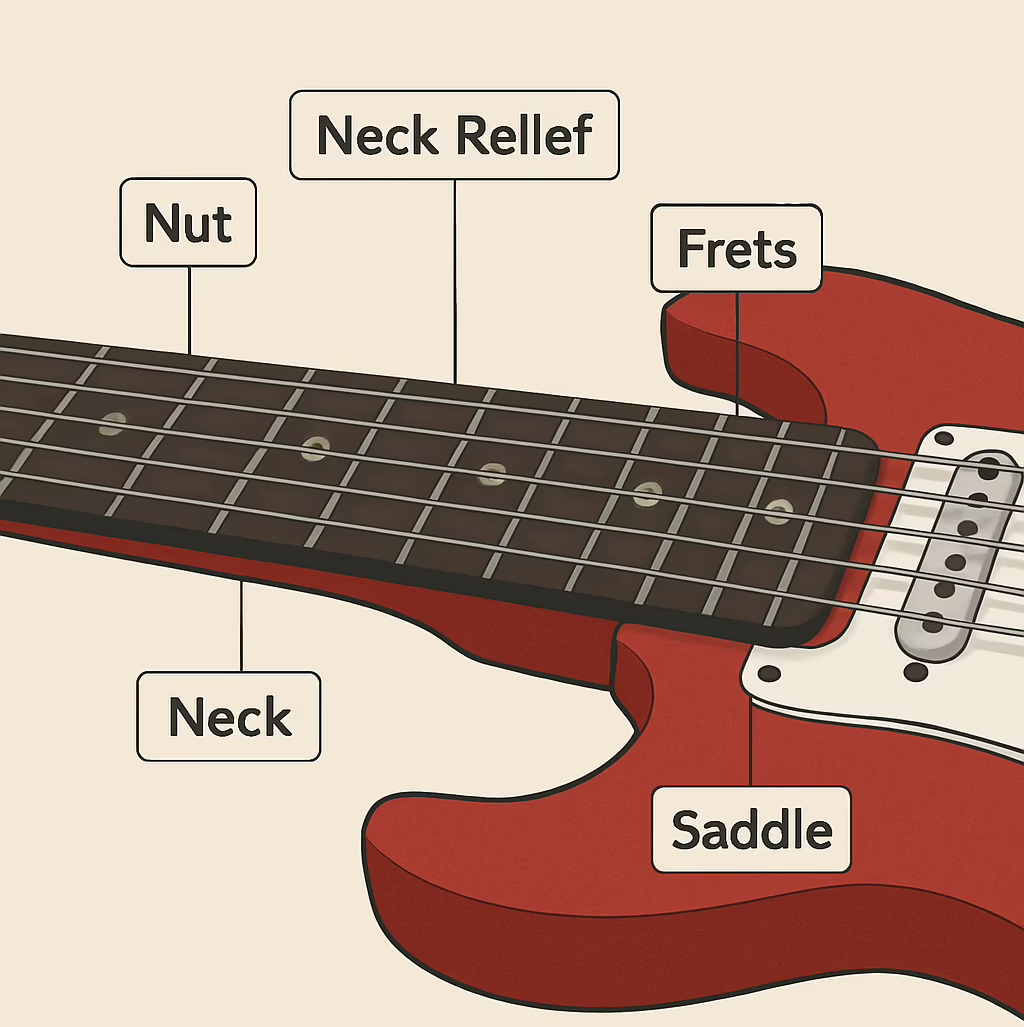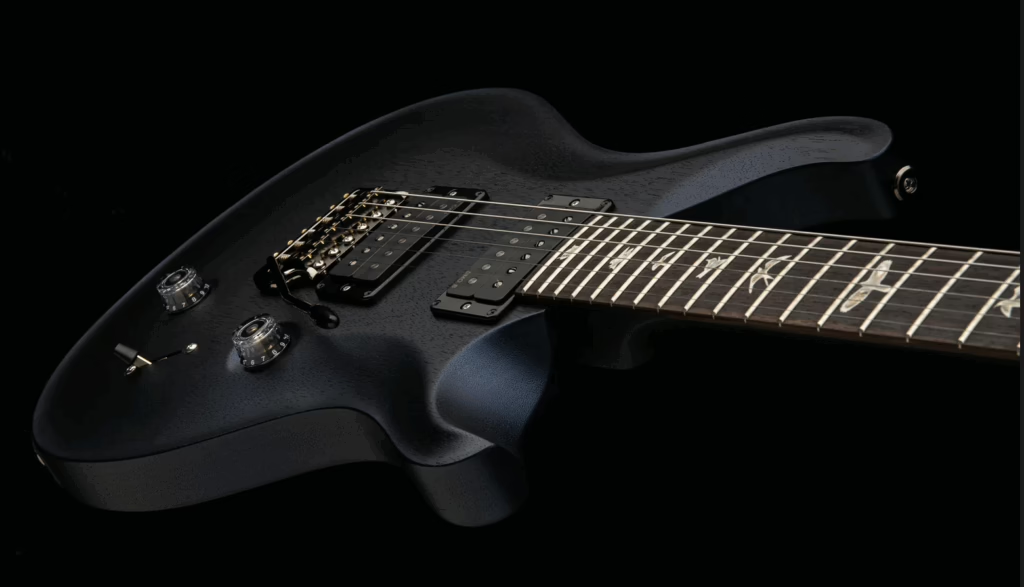Advertisement

____________________________________________________________________________________
Guitar "action" refers to the distance between the strings and the fretboard, which significantly impacts playability and tone. Lower action means strings are closer to the fretboard, making fretting easier, while higher action can lead to a more open and resonant sound but may require more force to fret notes.
Here's a more detailed explanation:
What is it?
Guitar action is the measurement of the height of the strings above the fretboard.
Why is it important?
It directly affects how easy or difficult it is to play the guitar and influences the overall tone and sustain.
Low action:
Strings are closer to the fretboard, making it easier to fret notes.
Can lead to fret buzz if too low.
High action:
Strings are further from the fretboard, potentially requiring more force to fret notes. Can lead to a more open and resonant sound and potentially increased sustain.
Factors Affecting Action:
Neck Relief: The curvature of the neck can affect the action. To check and measure neck straightness (or relief) on an electric guitar, use a capo and a feeler gauge, placing the capo at the first fret, fretting the string at the last fret, and measuring the gap between the string and the fret at the 7th or 8th fret
Nut Height: The height of the nut (where the strings go over the neck at the headstock) affects the action.
Saddle Height: The height of the saddle (where the strings end on the bridge) affects the action.
String Gauge: Thicker strings generally require a slightly higher action.
Playing Style: Some players prefer a lower action for faster playing, while others prefer a higher action for a more open sound.
Adjusting Action:
Electric Guitars: Adjusting the bridge saddles (the part of the bridge that the strings rest on) can raise or lower the action.
Acoustic Guitars: Adjusting the truss rod (a rod inside the neck that controls its curvature) and potentially the nut and saddle can affect the action.
Professional Setup: For optimal action, a professional guitar setup is recommended.
Acoustic Guitars: Adjusting the truss rod (a rod inside the neck that controls its curvature) and potentially the nut and saddle can affect the action.
Professional Setup: For optimal action, a professional guitar setup is recommended.
What is the perfect string action on a guitar?
Suggested Action Heights (Note: Action height is based upon style of play and preference, though there are times when there is just too much buzz for comfort, affecting the tone).
| Stringed Instrument | 1st Fret Low E Height | 12th Fret High E Height |
| Acoustic guitar | .023” – 0.6mm | .070″ – 1.75mm |
| Classical guitar | .030″ – 0.8mm | .125″ – 3.1mm |
| Electric guitar | .024″ – 0.6mm | .063″ – 1.6mm |
The action is mainly defined by the nut, saddle/bridge height, truss rod (neck relief), and fret condition—all working together to determine how high your strings sit and how easily they play.
Understanding string height and action is just the beginning of optimizing your guitar’s playability. Whether you're chasing buttery-smooth solos or tight, rhythmic precision, getting your setup right is essential. Next up, we'll explore how neck relief, intonation, and pickup height work together with action to create a guitar that feels custom-built for your playing style. Stay tuned!
If your understanding differs from the content above, please let us know. We always enjoy reading a different perspective an experience.
